
Have you been assigned an art critique assignment, but have no idea where to start, or how to write one?
Do you feel nervous about sharing your thoughts about artworks you are viewing in your high school or post-secondary courses?

If you’re feeling overwhelmed by the process of critiquing art or writing an art critique paper, try using the Feldman method of criticism.
This method will simplify the critical analysis process by using four specific steps for carefully examining art and help you gather high-quality information to craft a written outline for an art critique essay.
PART 1: Use the Feldman Method of Art Criticism
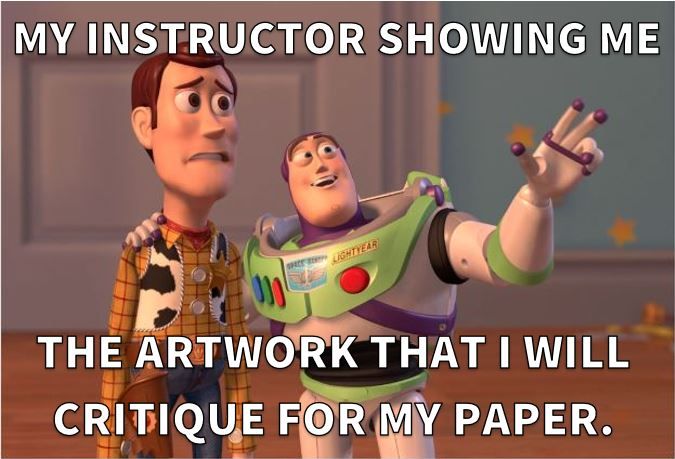
The Feldman methodof art criticism will help guide you through 4 sequential steps to describe, analyze, interpret, and judge (or evaluate) an artwork.
This method will also help you determine if the artwork's intended message has been successfully, or unsuccessfully, communicated.
Describe the Artwork
 Photo by Eri Pançi on Unsplash
Photo by Eri Pançi on UnsplashThe goal of this step is to gather visual facts about the artwork as you view it.
Look at the artwork to notice, or to become aware of what you see:
Select an artwork to critique.

View the artwork and record your first impressions, such as:
What do you notice first when you first look at the artwork?
What is the reason for you noticing this first?

Gather the factual information about the artwork, such as:
The title
Artist’s name
Year that the artwork was created
Current location of the artwork
Medium of artwork (i.e., oil painting, bronze sculpture, etc.)

Observe what you see in the artwork, and record the visual characteristics, such as:
Colors (i.e., red, blue, green)
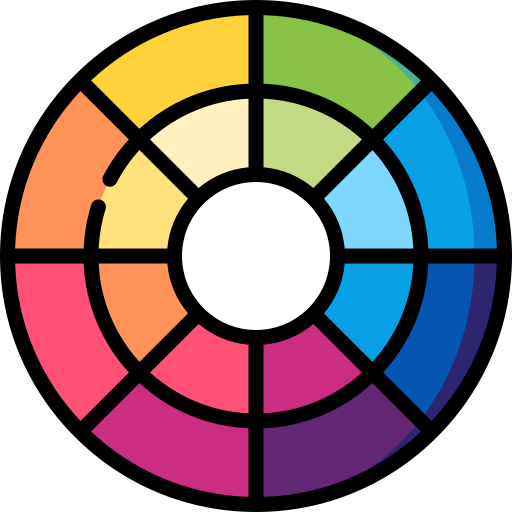
Lines (i.e., thick, thin, diagonal, etc.)
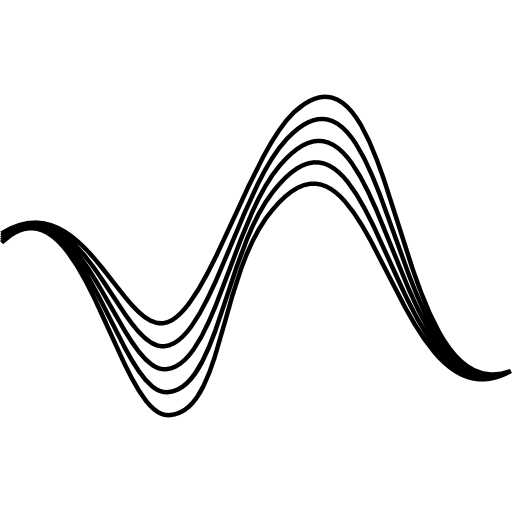

Shapes (i.e., geometric, organic, oval, etc.)


Factual subject matter (i.e., a vase and fruit bowl on a table)

Abstract elements (i.e., seen in abstract artworks)

Remember:
Be objective when viewing the artwork. Try not to get distracted by attaching feelings or meanings to what you're looking at because you may miss important visual facts.
You'll have time in the second and third steps of the Feldman methodto analyze and really understand what you're seeing!

Do:
Stick to the facts.
Observe, and list what you see.
Take your time with the artwork.
Continue to ask yourself, “What else?”
Review the elements of art to help you describe what you see.

Don't:
Attach feeling to an artwork (i.e., a mother is looking down, lovingly, at her baby).
Attach meanings or translate the elements of art (i.e., the angry-looking red lines are swirling menacingly in the background).
Application Activity
Carefully observe the painting, below:
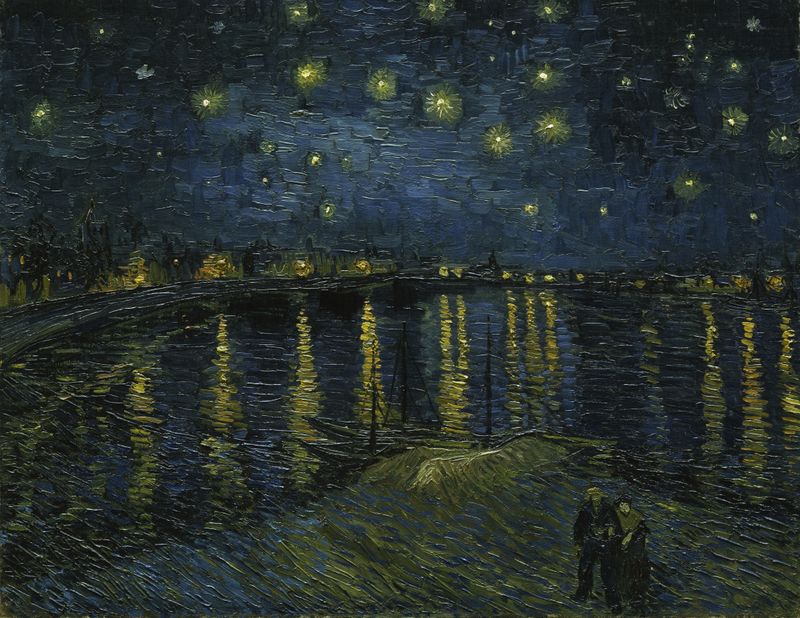 Image courtesy of Wikimedia Commons
Image courtesy of Wikimedia Commons
Describe the artwork, and select all that apply:
Option A: Vincent Van Gogh, Starry Night Over the Rhône, 1888 (Oil on canvas). Musée d'Orsay, Paris.
Option B: At the bottom of the painting, there are two figures, two boats, water, and waves.
Option C: Two boats stuck in the water, with waves crashing over them, amidst the exploding stars in the stormy night sky.
Option D: Yellow reflections on the water, buildings, streetlights, stars, mist, and lights in windows.
Quiz
Select all the statements that apply:
Analyze the Artwork
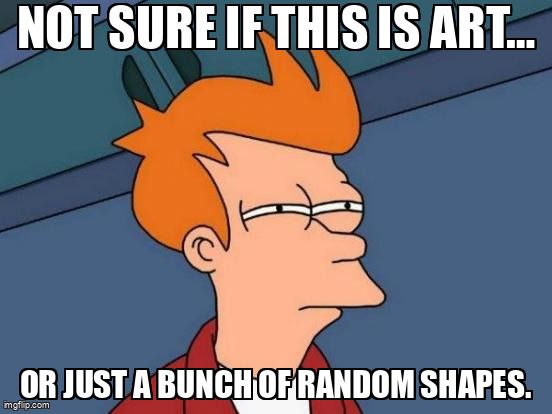
The goal of this step is to use the visual design elements of art and the principles of design to carefully examine each area of the artwork in order to discover:
The visual elements that have been used in the artwork.
The relationships between these elements.

Ask yourself:
What are the most notable design elements in the artwork?
How does the artist use color in the artwork?
What impact does color have on the artwork as a whole?
How is balance or contrast used in the artwork?
How is scale used to convey space and distance?
How have the elements been used to lead your eyes from place to place in the artwork?

How is the factual subject matter shown in relation to other subject matter?
For example, how are the size, color, and shape of the boat shown in relation to the textured sky, water, and figure in the artwork?

Is there a focal point in the artwork?
"How do the formal elements, line, tone, color, or composition support this focal point or center of interest?”

Application Activity
Take a look at Vincent Van Gogh's painting again to examine the various visual design elements and principles of design the artist used, so that you may discover the relationships between the various areas of the artwork.
Carefully analyze the most notable design elements in the artwork, and determine how they're used.
 Image courtesy of Wikimedia Commons
Image courtesy of Wikimedia Commons
Below, select the statements that best explain how the important elements are used:
Option A: The viewer's eyes move vertically, from top to bottom, via the vertical yellow reflections in the water, which lead the viewer's eyes: from the bright stars (at the top of the painting); through the light reflections in the water and the waves (by the boats); to the figures (in lower right part of the painting).
Option B: A balance of colors and contrasts is achieved because the horizon line divides the composition, equally, between the dark blue sky (in the upper part of the painting) to the dark blue water (in the lower part of the painting).
Option C: The center of interest appears to be the two figures (in the lower right part of the painting) because the figures are surrounded by yellow-colored water, which emphasizes their dark figures.
Option D: The sky shows depth through the scale and various sizes of the stars from small (far) to large (closer), giving the illusion of distance.
Quiz
Which statements best explain how the important elements are used in the painting?
Interpret the Artwork
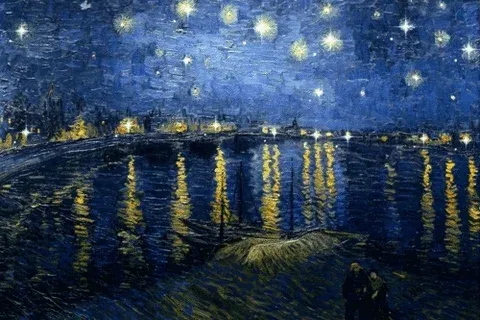
The goal of this step is to try to “make sense” of the evidence that you gathered in the descriptive and analytic steps of your critical process.
View the artwork again, and ask yourself:
How does the artwork make me feel?

When I combine all of the evidence that I have collected, what are some possible ideas for the meaning of the artwork?

What do I think the artist is trying to communicate to me as the viewer?

Does knowing the title of the artwork affect my interpretation of the artwork?

What evidence (or clues) support my responses to all of the above questions?
Judge the Artwork
In this step, you'll evaluate whether or not the artwork was successful in conveying feelings or communicating a specific message to you, as the viewer, based on the descriptive, analytical, and interpreted evidence.
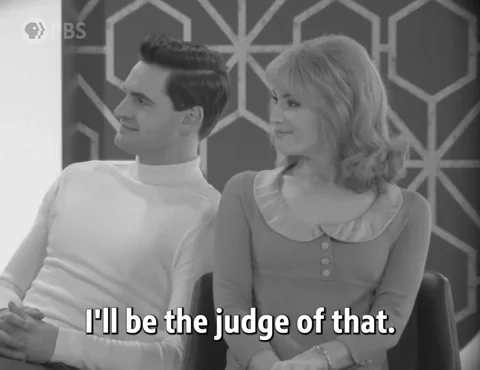
Before you judge the artwork, take the time to:
Review your notes from the previous three steps.
Reflect upon your first impressions.

Then, make an informed judgement about the artwork by asking yourself the following questions:
Have my current feelings about the artwork changed from my initial impressions? If so, what has changed?

What are the strengths of the artwork?

Has the artwork effectively communicated a message to me, or “affected my feelings/understanding about something”?

What have I learned from this artwork that will impact my future work?

Is the artwork successful or not successful? What evidence supports this?

PART 2: Write an Art Critique
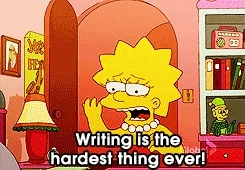
Writing an art critique can be challenging, but there are some guidelines that can help you.
A typical critique format has three basic parts:
Introduction
Body
Conclusion

What information do I include in my art critique?
The introduction and conclusion portions of the critique are typically short.
However, the body of the critique will include detailed information from your 4-step critical analysis process in Part 1 of this Byte.

What does a sample art critique outline look like?

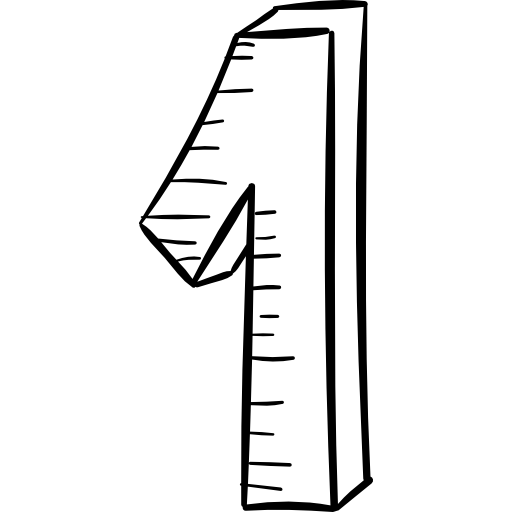
Introduction
Use an attention-grabbing hook or question to entice your reader to continue reading.
Briefly introduce artwork (artist, title, year).
Share your thesis statement.
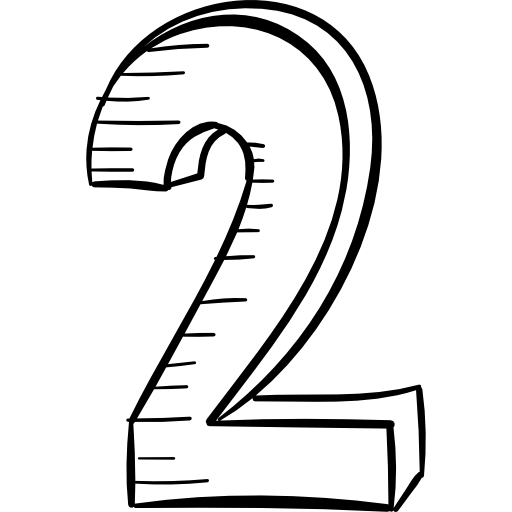
Body
A. Provide a brief historical background of the artwork.
Include:
A photo, if possible.
Biographical information about the artist for context (if it is relevant to your thesis statement).
Information about the artist’s style, or attachment to a specific art movement (i.e., impressionism, pop art, post-impressionism, etc.).

B. Provide an overview of your description and analysis.
Include:
Visual facts about your description and analysis of the artwork.
Your first impressions of the artwork, if it is relevant to your thesis statement.
Information about the media that the artist used to create their artwork (if it is important).

C. Provide your interpretations and evaluation of the artwork.
Organize the information (from the "analyze" stage) to make informed interpretations of the artwork, as it pertains to your thesis statement.
Share your informed opinion or judgment of the artwork, based on your interpretations and clues from the artwork.
Explain how your first impressions may, or may not, have changed your understanding or appreciation of the artwork.
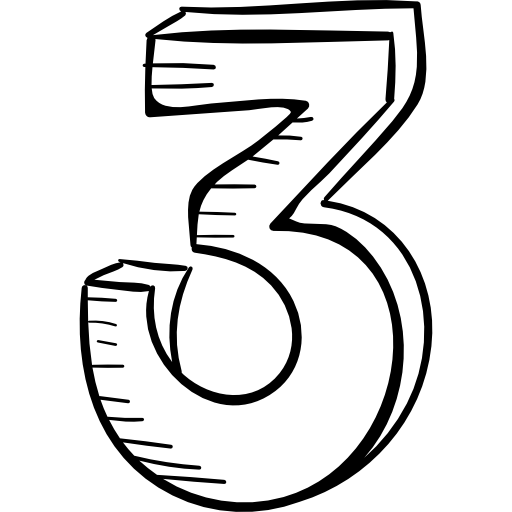
Conclusion
Provide a brief summary of your critical analysis process, and how it contributed to your understanding of the artwork.
Share how the critical analysis process supports or contradicts your thesis statement.

Tips for writing your art critique:
Ensure the written information is supported by the visual facts that you gathered in Part 1.
Write a thesis statement to frame your art critique ideas.
Example: “This art critique describes and analyzes the visual design elements in [specific artwork], and how these elements successfully convey the artist’s intended [specific message]”.
Include a balanced analysis of the positive and negative aspects of an artwork, based on your thesis statement or critique focus.
Take Action
Now that you better understand the 4-step critical analysis process for examining an artwork and the requirements for writing an art critique, you're ready for the next steps.
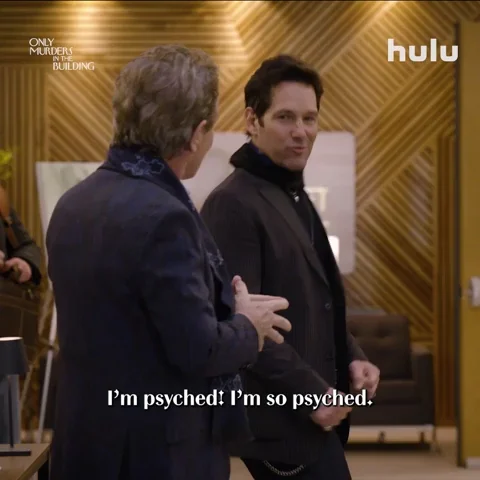
Try using this knowledge to investigate another work of art, or expand your critical analysis skills by doing the following:
Your feedback matters to us.
This Byte helped me better understand the topic.
